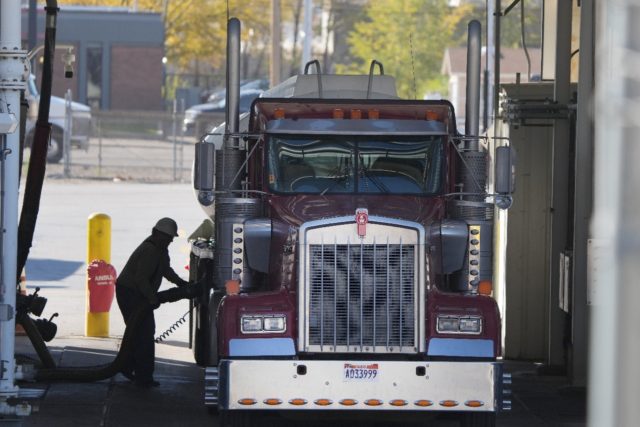With inflation surging ahead of the Thanksgiving holiday, US President Joe Biden has drawn on the seldom-used Strategic Petroleum Reserve to combat rising oil prices that have fueled the recent spike.
Fifty million barrels of US crude will be dumped on the market, along with undisclosed contributions from China, India, Japan, South Korea and the United Kingdom.
However analysts say markets may view the coordinated initiative as symbolic and its impact may be short lived, since oil supply is tight worldwide and major producers in OPEC have only gradually restored production cut during the Covid-19 pandemic.
What are the reserves?
The Strategic Petroleum Reserve was set up in 1975 as a cushion against oil price shocks.
The reserves are buried in immense salt caves along the Gulf of Mexico that are as large as 2,500 feet in length and contain up to 714 million barrels of oil, the largest emergency holding of crude oil in the world, according to the Department of Energy.
The approximately 60 reservoirs are divided among four highly protected locations in Louisiana and Texas. At the moment, they hold just over 609 million barrels, sufficient to meet the country’s demand for about six months, the Energy Department said.
It takes about 12 days after a president’s decision to release the reserves for the oil to be refined or sold on the market. The crude can be used to meet domestic demand, or it can be exported.
“The 50 million barrels represent three days of demand from the nation’s refineries,” said Andy Lipow of Lipow Oil Associates, stressing the symbolic nature of Biden’s move.
How have they been used in the past?
By law, the American president can release up to 30 million barrels over 60 days, or more in the case of a “severe energy supply interruption.”
President George H.W. Bush ordered the release of about 17 million barrels during the first Gulf War in 1991.
In 2005, George W. Bush tapped 17 million barrels after Hurricane Katrina devastated Louisiana’s petroleum refining infrastructure.
Barack Obama asked for 30 million barrels in 2011 after turmoil in Libya caused a tightening of the market.
In contrast, George W. Bush ordered the reserves filled to the brim as a precaution after the September 11, 2001 attacks.
Will it work?
Undamming oil reserves to lower the price of crude will likely only have a limited and short-term effect, and be most effective if coordinated with other nations, said John Kilduff, oil market analyst at Again Capital.
Digging into the reserves could also appear to clash with the Biden administration’s stated goal of putting the fight against climate change at the center of its agenda.
“It’s obviously a contradiction,” Kilduff said. “The real climate change champions want higher prices so that other forms of energy, essentially renewable, can be more competitive.”
Beyond tapping the reserves, Biden has also asked the Federal Trade Commission to probe whether “illegal conduct” is behind the energy price spike.
However with inflation climbing by 6.2 percent annually in October, its highest level in three decades, Biden’s administration may view getting pump prices down as more important than the transition to green energy, at least for now.
The price increases hurt “Biden’s popularity and approval rating in a big way,” Kilduff said.
The average price of a gallon of gas has soared to $3.41 from $2.12 a year ago, according to the American Automobile Association.
“It’s a breaking point because that is when it will cost most folks $100 to fill their SUV. That gets the attention of folks and really hammers consumer confidence,” said Kilduff, adding that all US recessions have been preceded by a leap in gas prices.

COMMENTS
Please let us know if you're having issues with commenting.